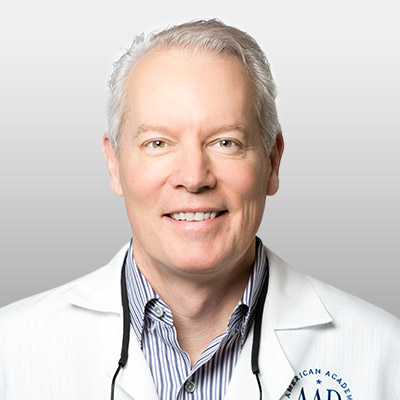When we see a red spot on our face, we often blame acne, but it may not be the real culprit. If you notice bumps on your skin that acne treatment doesn’t seem to help, you may have rosacea. Distinguishing between rosacea and acne can be tricky, but with an accurate diagnosis comes an effective treatment.
What Is Rosacea?
Rosacea can be confusing. It looks similar to acne, but the cause and treatments are completely different. It’s an inflammation of the skin, the cause of which is unknown. The features of rosacea are redness and puffiness, predominantly on the cheeks and nose. Yet sometimes rosacea spreads to other areas as well.
Where Will I See Rosacea?
Rosacea is usually limited to the nose and cheeks, but bumps and redness can appear on the ears, scalp, forehead, or chest. Some people even experience ocular rosacea, where they feel a gritty sensation in their eyes caused by the same bumps. If you notice inflammation in any of those areas, you could be experiencing this condition.
What Triggers Rosacea?
Although we don’t know the exact cause of the inflammation, we can identify the factors that trigger it. Rosacea gets worse with heat, stress, cold wind, or alcohol. Even people without chronic rosacea have mild breakouts occasionally.
Related: How to Prevent Rosacea Flare-Ups
What Does Rosacea Look Like?
These red bumps, or inflammatory papules, look like pimples. However, if untreated, they inflame into more cosmetically distressing issues. They can create the look of a red, bulbous nose (think W.C. Fields) or telangiectasias (small spider veins on your cheeks that can’t be erased). Fortunately, rosacea treatments can help your skin before it inflames beyond repair.
Do I Have Rosacea?
If you notice those symptoms, it’s best to visit your dermatologist for a diagnosis. You can even wait until your next scheduled check-up. Typically, we can visually recognize the condition without the need for a biopsy.
If you have rosacea, it’s time to start a treatment plan. With regular use of topical or oral medicines prescribed by your dermatologist, you can manage your condition. The right treatment will cause a difference in your skin rather quickly.
What Not to Do If You Think You Have Rosacea
If you notice red bumps on your skin, resist the urge to scratch them. Rosacea can be itchy and uncomfortable. Instead of scratching at these places, find a treatment that works for you. Some people pick at the red bumps because they mistake rosacea for acne. Remember you should never pick at your skin, whether you have acne or rosacea. If you do, you’ll leave yourself with sores and scarring.
Related: 3 Skincare Habits That Are Ruining Your Face
Also, don’t assume the condition will go away on its own. If you leave it too long, you could end up with a red nose or veiny cheeks. It’s much better to visit your doctor so you can start an intervention. That way you’ll keep the problem from progressing.
Lifestyle Changes to Avoid Rosacea Flare-Ups
Rosacea affects people differently. Some have severe reactions, while others only have a mild case. If you notice a pattern in your worst flare-ups, consider making a change. For example, if you see bumps after a hot yoga workout, assume that heat is a trigger. You can decide what changes you’re willing to make to avoid making the condition worse.
Rosacea doesn’t have to plague you indefinitely. With awareness to its triggers and a treatment plan from your dermatologist, you can erase its symptoms altogether. If you’d like us to help you find the right treatment plan for your skin, contact us here.

Dr. R. Todd Plott is a board-certified dermatologist in Coppell, Keller, and Saginaw, TX. His specialization and professional interests include treating patients suffering with acne, identifying and solving complex skin conditions such as psoriasis, rosacea, atopic dermatitis, and identifying and treating all types of skin cancers. In his spare time, Dr. Plott enjoys cycling, traveling with his wife, and spending time with his children and new grandson.
Learn more about Dr. Plott.

